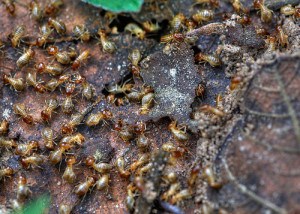Termites are very destructive creatures. They cause billions of dollars of damage every year in the United States. They are able to sustain themselves on the wood of our homes and landscaping in our Scottsdale yards due to the temperate climate. Termites live in colonies like ants and some bees and wasps. They divide the labor of caring for the young and protecting the colony among castes which is what helps determine the lifespan of each termite. We here at Varsity Termite and Pest Control find this life-cycle very interesting and can do a termite control service in Scottsdale for you.

What Does Each Termite Do In A Typical Colony In Scottsdale?
Each Scottsdale termite has a role to play in the colony. These roles may change as the colony grows and expands. Below is the Life -Cycle and the different castes or roles:
Termite colonies range in size from 4,800 for Drywood termites to as many as 1 million for subterranean termites. This life-cycle and caste system is the one thing that all colonies have in common no matter what the climate. You will find that your Scottsdale termite colony is structured very much the same way.
Published By:
Varsity Termite and Pest Control – Tony Kaufman
Office: 602-757-8252
Website: https://varsitytermiteandpestcontrol.com
How To Prevent Termite Swarms In Your Home If you own property in Arizona, you…
Black Widow Spiders Prevention Tips Have you spotted these eight-legged demons in your Arizona home?…
Ways To Keep Bees Away From Your Home For many of us, bees are harmless…
Roaches In My Microwave: What Can I Do? How would you react if you found…
Why Are There So Many Spiders In My Garage? Have you ever seen spiders in…
How To Get Rid Of Scorpion Infestations Naturally Scorpion infestations are a common problem for…